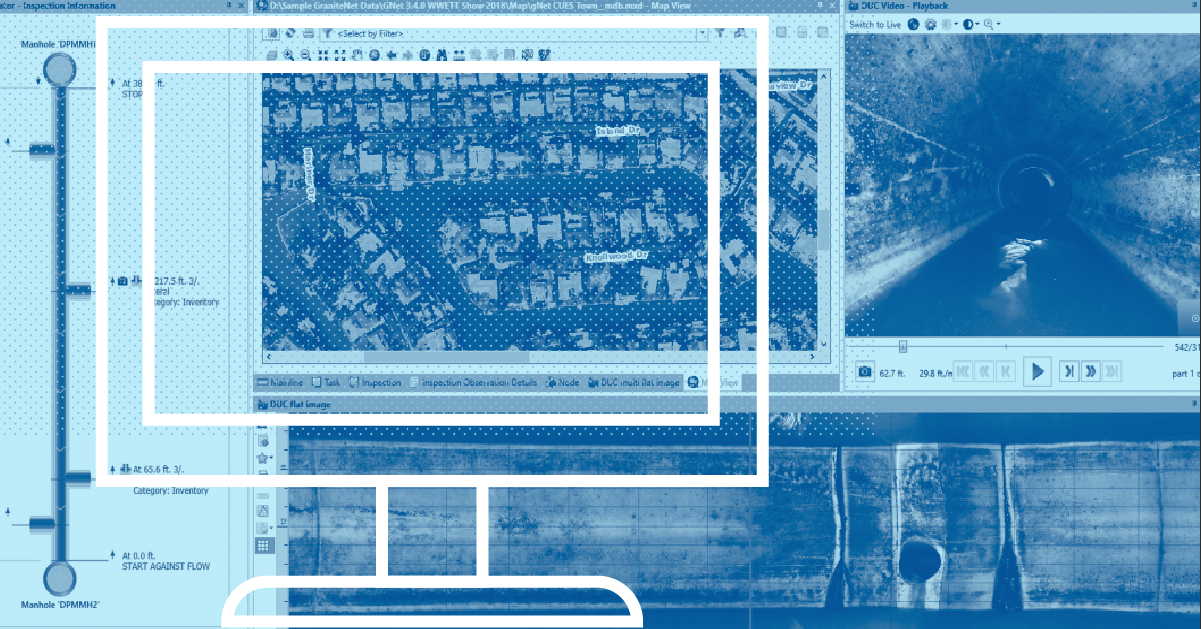Below the Surface
Below the Surface:
Managing a Mountain of Sewer Inspection Maintenance
Aging infrastructure is a critical problem for every region across the country. We’ve seen bridges collapse from lack of maintenance, roads crumble during floods, and airports closing due to excessive heat. One thing is clear: it’s time for a national, industry-wide discussion about the aging infrastructure under our feet. This includes sewer pipelines and systems.
Aging Sewer Infrastructure
Below our feet, there are over 700,000 miles of sewer pipelines—some reaching centenarian status, nearing 100 years old. As these pipes continue to age, they’ll become more prone to problems, such as pipeline and mainline leaks and breaks.
While finding hundreds of millions of dollars for repairs is difficult, it can be even more challenging to find the proper locations to direct your focus so that both the overall sewer maintenance budget and employees’ time are used efficiently and effectively.
Sewer Inspection Hardware Can Help
The good news is that technology and tools, such as CCTV pipe inspection software and water pipe inspection cameras, have been developed just for this purpose. These sewer maintenance tools can help you find the most critical faults, map your system, and keep a vigilant watch over the areas of your system that don’t yet need to be repaired—but could be next.
Advanced pipeline inspection equipment can help professionals get a more complete picture of their entire system. Beyond the simple visual picture that CCTV inspection can provide, sonar, like our LIDAR and laser inspection tools, will let you know where the faults are, how big pipe cracks are, and how impeded by sediment your pipes are. All these products work seamlessly together and are deployed from custom-designed trucks to execute the tasks at hand. But even the best hardware can only take you so far.
Sewer Inspection Software Designed to Support
Modern software solutions, like GraniteNET, work with you every step of the way, from the inspection site to the office and back. What also sets GraniteNET apart is that it puts all your inspection data at your fingertips so you can better understand which lines need to be replaced, which can be repaired, and which ones can be left alone. From there you can accurately and efficiently assign resources to the areas that need it most.
GraniteNet & the CUES Difference
GraniteNET also grows with you and your team. Many municipalities have improved their productivity using this sewer inspection software, even going further to improve their operations by adding optional modules. Available proprietary AI tools can even code your inspection footage automatically which saves time, helping maintain the level of inspection quality in municipalities even with high inspector turnover.
GraniteNET can even help Engineering Teams save time and money in their Rehab (CIP) projects through its Prescriptive Planning module. This service provides automated rehab and repair suggestions based on the defects identified during inspections. Prescriptive Planning is based on the NASSCO PACP standard, so it will calculate the current PACP (6 & 7) inspections as soon as it is enabled to provide a status of the infrastructure.
With the combination of CUES’ AI and Prescriptive Planning software, customers can save hours of consulting time by not only automatically coding for you but also identifying sections of systems that require no additional information.
By working with CUES, Inc., you can learn how to use the inspection data gleaned to streamline operations, increase efficiency, and integrate data from all of the sources you have access to.
We work with municipalities every day to make sure that they have curated solutions that fit their needs—from a wide variety of sewer inspection equipment to CCTV trucks, to software that helps manage all the data.
EXPLORE OUR INSPECTION EQUIPMENT

